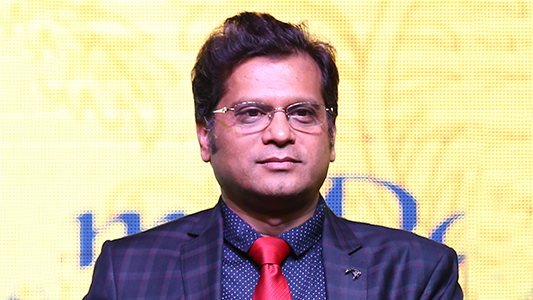The industry landscapes are changing dramatically. With the rise of IoT, almost every device, equipment and machinery has joined the bandwagon to make the smart move. Thus, in this era of smart technology, businesses must operate non-stop making it imperative to keep the power on at all times. However, this doesn’t always sync with the increasing power fluctuations in various parts of the country. Here, Uninterrupted Power Supply (UPS) is playing critical role in providing a steady flow of clean power supply at all times.
To keep up with the smart devices, UPS solutions too need to undergo a smart transition. UPS solutions that integrate smart capabilities are a potential game changer for the industry by offering connected monitoring, centralized management and optimized power loads.
The indelible potential of UPS
Today, UPS systems are used in almost every establishment, be it industrial, DC, Medical and building or residential. The need for a seamless power source has become pivotal in addressing unannounced power disruptions. Furthermore, UPS also smooths out the incoming power from the grid to protect equipment and machinery against power disturbances. This is especially true for sophisticated digital and precision devices that are extremely vulnerable to power fluctuations. Power interruptions can not only cause damage to these sensitive devices but can also lead to huge losses including data loss and workflow disruption.
UPS acts as a barrier between the power supply and the devices to keep them protected. UPS models including Line-interactive devices and double conversion devices play a crucial role in office or industrial setup. They not only measure the over- or under-voltage supply to create a balanced flow but also mitigate power quality issues and filter the electricity from the grid to deliver a constant voltage to the equipment.
The need for such solutions has further grown with the high advancement in the data center industry. A smart UPS that integrates with the data center ecosystem can provide real-time status updates on device health and performance. For instance, if a battery needs replacement or if there is a malfunction in any part, the system immediately sends a notification for maintenance so that the issue can be resolved on time and power disruption can be avoided.
Future advancements in UPS technology
The UPS technology has been around for decades. However, with the future of things coming into place, UPS solutions are bound to undergo a huge transformation. With the increasing need for seamless power supply, the UPS market is expected to witness a double-digit growth by 2028. However, the technology’s full potential is yet to be realized.
The future will be dominated by smart uninterrupted power supply solutions that will not only ensure constant power supply through unhindered transition to battery power but will also have a range of other capabilities.
For instance, in cases where power outrage exceeds the UPS battery’s capacity, the smart systems will ensure proper shutdown of all connected devices before power is lost. It will also ensure that the equipment reboots correctly when power is restored. Smart UPS solutions will also be able to safeguard the operation by shutting down the ancillary equipment first so that the critical equipment is powered longer.
Smart UPS solutions will also be able to immediately notify of critical issues not only in the UPS but any connected equipment for preventive maintenance to take place. This will further ensure that seamless connectivity is always maintained.
The future will witness more compact models of smart UPS solutions that are more robust and efficient. The trend is moving towards Modular UPS systems with intelligent battery management that will lead to greater charging control and voltage regulation. Intelligent battery management will avert overcharged batteries, provide conditioned and regulated current flow and ensure evenly powered equipment and devices. This will not only extend battery life and increase performance but can also help save energy costs.
Furthermore, as most organizations have transitioned to remote operations, a smart UPS can integrate with the infrastructure and enable remote power management that can be controlled from one central location. These advanced solutions will also enable organizations to achieve enhanced power sustainability by optimizing the use of power and supporting the decarbonization of energy at the grid level.
As the future will witness a slow retraction from fossil fuels and increased dependence on renewable power supply, the role of UPS solutions will be further revised to meet the needs of the time. Renewable source of energy is yet to produce a consistent and continuous amount of power. Thus, UPS’s energy storage capacity in their batteries will play a pivotal role in redefining the constant energy supply. Smart UPS solutions will be able to harness optimum energy from renewable energy sources and leverage it by judiciously powering various devices.
It can also be used as a distributed energy resource to help electricity grids manage the high variability of energy generated by renewable sources. In the years to come, smart power management will be the need of the hour wherein UPS will be able to interact with smart grids and supply and consume energy on demand. This will lead to massive optimization of energy usage leading to optimal redirection of power from low utility regions to regions with power crunch. Many countries have already begun experimenting with grid-interactive functionality and it is soon set to become a norm across the world.
The Way Forward
The digital advancements of UPS solutions will not only change the dynamics of seamless power flow but will also resolve the pressing issue of power crunch with optimal flow of power to necessary devices and redirecting saved and unused power to places in need. This will eventually lead to a world that is always in ‘Power On’ mode.












